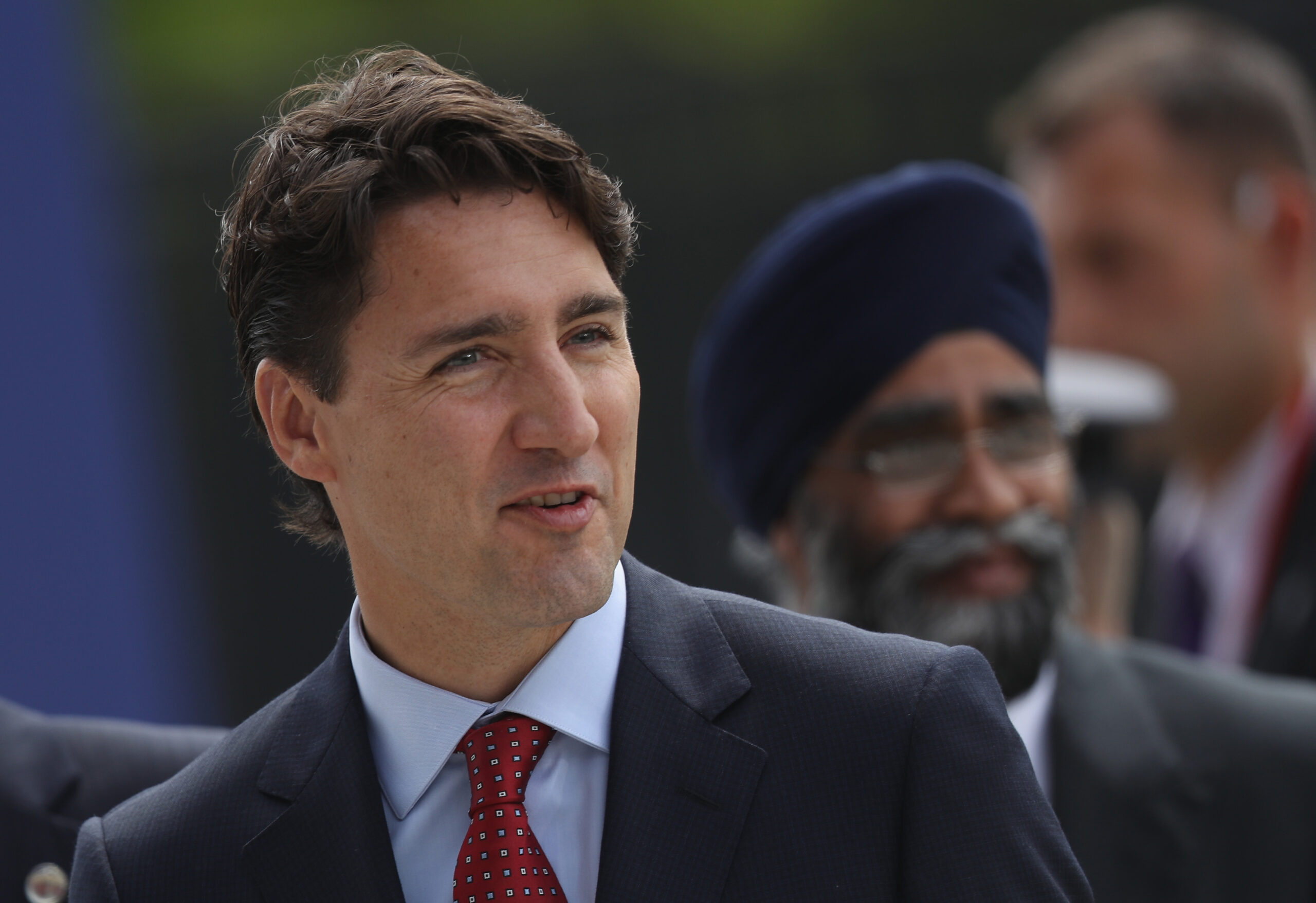
Justin Trudeau, Prime Minister of Canada, and Canadian Defense Minister Harjit Sajjan may feel left out of the AUKUS agreement. (Sean Gallup/Getty Images)
When Australia, the US and UK announced a new pacific-focused defense agreement last month, it was hard not to notice that the deal excluded the other two members of the Five Eyes intelligence agreement. Local media in Canada certainly seized on it to raise questions about Ottawa’s standing in the world. Bill Greenwalt, a member of the Breaking Defense editorial board, writes below that Canada should take this as a wake-up call.
With all of the ink spilt on French pique over the future sale of nuclear submarines to the Australians, there was one other French-speaking nation left out — our neighbor up north.
AUKUS, the new alliance between the US, Australia, and the United Kingdom was a shock to France who merely lost a $66 billion submarine contract, but to a supposedly close Five Eyes intelligence cooperation partner, it appears Canada has lost something more — its standing among its allies.
In response to not being consulted about the new alliance, the Canadian bureaucracy has seemingly read the tea leaves correctly. Unnamed Canadian officials referred to the pact in press accounts as a new “Three Eyes,” and “said Canada’s exclusion indicates that its closest allies consider Ottawa to be a ‘weak sister’ when it comes to standing up to China.”
Canada is not alone; fellow Five Eyes partner New Zealand, appears to also have become a second-class citizen in this arrangement. For New Zealand, a country with a population the size of South Carolina, a history of anti-nuclear pacifism and a recent softness on China, that classification might not be a big deal. Wellington, after all, is already punching above its weight. For Canada, this should come as an existential shock.
Geographically the size of the United States and by population the size of California, Canada has, since the 1941 Hyde Park declaration, been the US’ closest defense cooperative partner. The intertwining of each nations’ defense industries has resulted in Canada being the only country with an exemption to US export control laws and regulations, legally recognized and treated as an integral part of the United States defense industrial base — the so-called National Technology Industrial Base (NTIB).
Still, as seen by some south of the 49th parallel, Canada’s inability to invest in its defense over the decades has been a sore spot. In retrospect, Canada’s cancellation of the AVRO arrow in 1959 — then one of the most advanced jets in the world — marked the start of a 60-year decline in defense capability. Canadian defense spending as measured by percentage of GDP dropped from 4.2% in 1960 to a nadir of 0.99% in 2014. As a result of paying for its welfare state, the size and quality of Canada’s defense forces and its innovativeness inevitably declined. Operations in Iraq and Afghanistan further financially strapped the Canadians, and planned modernization efforts were put on hold. Radars, ships, and planes continue to depreciate and deteriorate while the Arctic increasingly risks becoming a Chinese and Russian lake.
A strong undersea capability able to deploy to its northern reaches should be a priority to defend its sovereignty, but instead the Canadians continue to operate a decrepit force of four 30-year-old UK castoff diesel submarines that the Pakistani Navy didn’t even want. The Royal Canadian Navy’s capabilities are a far cry from the promise when then-President Ronald Reagan in 1988 surprised the Pentagon and approved the transfer of nuclear submarine propulsion technology to Canada to build a new class of submarines. Unfortunately, this once in a generation chance for Canada to acquire a nuclear submarine capability never got off the ground.
It thus should come as no surprise that Australia, which has been vocal in recognizing changing new threats and is spending more on its defense, is now being wrapped in a closer defense cooperative relationship with the US. This process began in 2015 when the US Congress added Australia and the United Kingdom to the NTIB construct. The new AUKUS alliance appears to have leapfrogged the promise of NTIB by applying to other areas of technology cooperation, such as AI and quantum, that are beyond what is needed to just modernize submarine forces.
While Canada appears to have been left behind, it has been making some progress in increasing defense spending over the last five years. Still, as often the case in the US, these outlays are oftentimes more geared to social goals than delivering actual military capability. Additional spending and a focus on buying the right things is needed, but it remains to be seen if the political will exists to do so.
Perhaps it is now time to resurrect President Reagan’s vision for a strong Canadian nuclear submarine force. This could come with either US or French assistance — which perhaps might placate another slighted ally. Canada should be a Pacific, Atlantic, and Artic power, and having an advanced, truly capable undersea force integrated with like-minded allies would be a huge asset and force multiplier in those theaters.
Perhaps recent events will provide the necessary spark — and a Four-Eyed CANAUKUS might be spotted soon.
Bill Greenwalt, long the top Republican acquisition policy expert on the SASC, rose to become deputy defense undersecretary for industrial policy. A member of the Breaking Defense Board of Contributors, he’s now a fellow at the American Enterprise Institute.
Textron, Leonardo bank on M-346 global experience in looming race for Navy trainer
“The strength we think we bring is that [the Navy is] going to go from contract to actually starting to turn out students much quicker than any other competitors,” a Textron executive told Breaking Defense.



























